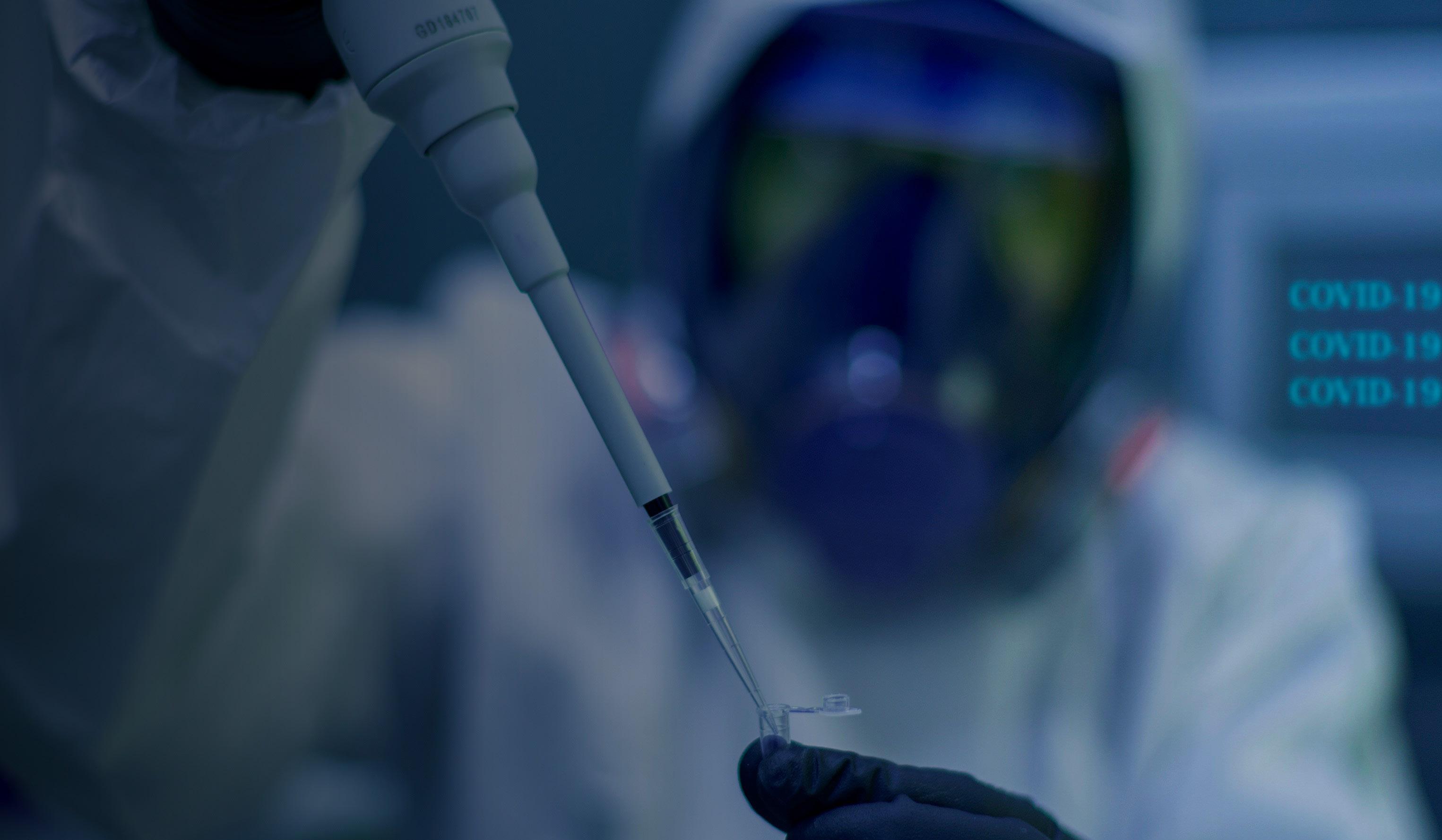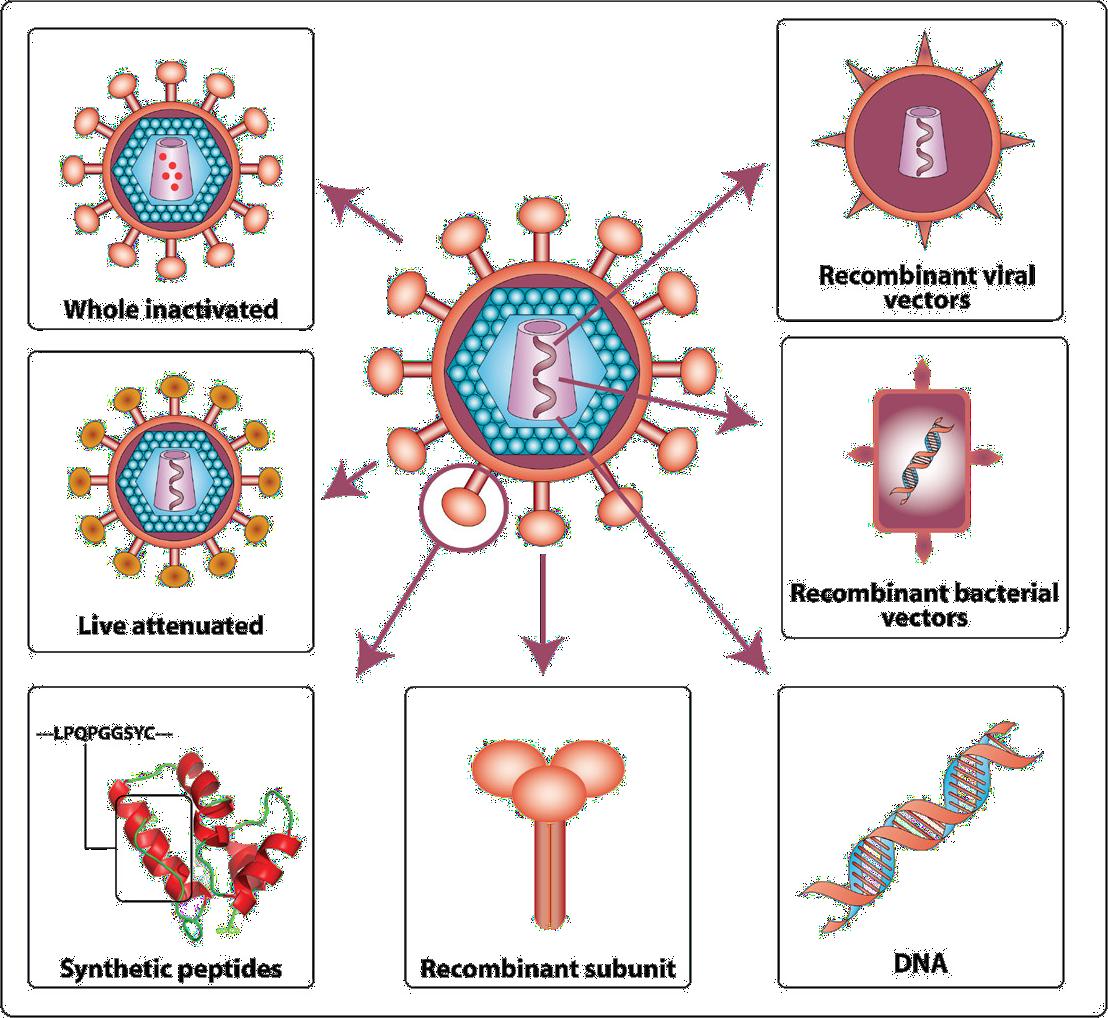
8 minute read
mRNA: TheNext Frontier In Vaccine Science Nachiket Girish
mRNA: The Next Frontier In Vaccine Science
BY NACHIKET GIRISH
Advertisement
THE NOVEL CORONAVIRUS
The virus which goes by many names—SARS-CoV-2, Covid-19, the Novel Coronavirus, or just the coronavirus, itself needs no introduction. The scourge of the year 2020, this most notorious member of the family of coronaviruses has ravaged the entire world and has fundamentally changed the life of everyone on Earth. From the victims who tragically lost their lives, to those who lost their livelihoods, to those who recovered but had to bear the burden of expensive and inaccessible healthcare, this pandemic has shocked humanity as a whole, and has precipitated a difficult struggle to overcome this biological disaster.
The scientific community has been at the forefront of the battle against the virus, and has produced several promising palliatives and post-infection treatment regimes. However, as host of popular podcast Freakonomics Radio Steven Dubner puts it, “when history looks back, the Covid-19 pandemic will be divided into two eras: before the vaccine, and after the vaccine.”1 Indeed, while drugs are periodically developed as possible coronavirus treatments, the majority of public focus remains on the international race to produce
the first successful Covid-19 vaccine.
How do these vaccines even work? While vaccine science at this point is already more than 200 years old, the coronavirus vaccine race has led to brand new answers to this question. One of these new approaches to vaccine development has been the creation of an effective mRNA vaccine. This long-dormant concept has been resuscitated by vaccine developers such as Moderna and BioNtech (in collaboration with Pfizer) and has the potential to change the very way we think of vaccine production.
VIRUSES AND MESSENGER RNA
Messenger RNA, or mRNA for short, is a molecule similar to DNA that is found in the human body. While DNA is famous for its double-stranded helix, RNA is its single-stranded cousin, and the two share many functional similarities.
The DNA in the nucleus of our cells is the “instruction set” from which our entire body is designed. One of its many jobs is to tell our cells which proteins to manufacture for our body to function.
However, the funny thing about our cells is that ribosomes, the workers who create the proteins our body requires, do not speak the same language as the DNA, the designer who is supposed to tell them what to do. Nor do they even live in the same place—DNA is found inside the cell nucleus, while ribosomes are present in the cytoplasm outside the nucleus.
This is where mRNA comes in. Messenger RNA travels from the nucleus into the cytoplasm, containing instructions from the DNA telling the ribosomes exactly what to do in a language the ribosomes
can understand. The ribosomes can now execute these instructions and create the vital proteins our body needs.2
The ribosomes execute their instructions faithfully, but blindly— they do not even know what they are being told to make. This blind faith is one of the biggest reasons most viruses even exist.
Viruses and RNA share a very intimate relationship—viruses are fundamentally just strands of DNA or (as in the case of the novel coronavirus) RNA molecules.3 When viruses are outside a living host, that is literally all they are: random floating bits of genetic material, enclosed in a protein shell and some molecular structures. They show no signs of life, and crucially, they cannot reproduce.
When they enter a host, however, their genetic information is quickly delivered into the host cells. There, the RNA strands sneak into ribosomal hatchways and begin barking orders, causing ribosomes to mindlessly create not useful proteins for the body, but copies of the virus itself. These copies escape their host’s confines to infect more cells, a process that often kills the original cell. In this way, the virus quickly multiplies and takes over the body.4
BEATING THE VIRUS AT ITS OWN GAME
The conventional approach to vaccine science has been broadly unchanged since its origins in the late 1700s—when Edward Jenner realized that exposure to cowpox, a fairly mild disease, would protect people from its far, far deadlier cousin, smallpox. Usually, our immune system can identify a pathogen (a disease-causing agent such as a virus or bacterium) once it enters our body, and create customized defenses to fight against it. These defenses take time to kick in, by which time the pathogen can wreak havoc in the body. However, if we induce the immune system to create these defenses before infection occurs, our immune system will be ready to fight similar future pathogens. That is how most vaccines work: they inject something into the body which looks (to our immune system) a lot like a pathogen, but does not cause illness. The body gets fooled into creating defenses, and if the actual pathogen attacks, it can be easily fought off by the immune system.
All conventional vaccines follow the above principle, but vary in how they create the “pseudo pathogen” to fool our immune system. Some, like the Oxford Astra-Zeneca Covid-19 vaccine candidate, use dead or “inactivated” viruses with similar characteristics to the pathogen.6 These inactivated viruses are manufactured in a lab and injected into the body.
The mRNA vaccine, however, takes a very different approach and bypasses the manufacturing process completely. Instead, taking a page from the virus’ own book, this vaccine delivers mRNA instructions to the human body’s cells, so that the body itself develops the pseudo pathogens which then train the immune system. This makes mRNA vaccines much faster to manufacture, which— especially during a pandemic, when time is of the utmost essence—is a game changer.7,8
THE ROAD AHEAD FOR MRNA VACCINES
The idea of using mRNA for vaccines has been in the air for the past few decades, but it has only been during this Covid-19 pandemic that the concept has reached its fruition as a leading vaccine candidate. Why did such a novel, promising approach to vaccine science take so long to find application? The implementation of an mRNA vaccine has involved several practical problems. For instance, scientists could not find a reliable way to deliver the mRNA to the target cell without it being destroyed in the body first. Viruses achieve this by using their protein shells; only recently have researchers been
Figure 1. Various types of vaccine approaches. The Oxford vaccine will potentially be a live attenuated vaccine (second on the left): it will contain something which looks a lot like the coronavirus but isn’t illness-causing, tricking our body into training our immune system to identify what the coronavirus looks like, so our immune response will be customized. If the actual virus shows up, our body will already have defenses against it to protect us. Licensed under CC BY 2.0.

Figure 2: The coronavirus. You can see the RNA strands cocooned inside the protein shell. The “Spike Glycoprotein” is a feature on the surface of the virus which allows the virus to attach itself to host cells. Many vaccines try to mimic this spike to train the immune system to recognize it and get triggered whenever it is detected in the body. If the live virus enters the body, the immune system then recognizes its spike and starts attacking it.

able to devise a similar “capsule,” made of lipids, in which to transport the mRNA.9 Moreover, since this is still a new concept in vaccine science, there is still very little data about the efficacy of mRNA vaccines compared to traditional protein vaccines—indeed, this pandemic is going to see the first instance of a wide-scale deployment of such a vaccine, whose success or failure will have large-scale implications on its future potential. As the world waits with bated breath for the vaccine which might end this pandemic, that moment may also herald a new era in vaccine science.
REFERENCES
1. Dubner, S. (Host). (2020, August 26). Will a Covid-19 Vaccine
Change the Future of Medical Research? (No. 430) [Audio podcast episode]. In Freakonomics Radio. Freakonomics. https:// freakonomics.com/podcast/vaccine/ 2. National Human Genome Research Institute. Messenger RNA (mRNA). In Talking Glossary of Genetic Terms. Retrieved
December 12, 2020, from https://www.genome.gov/geneticsglossary/messenger-rna 3. Boopathi, S., Poma, A. B., & Kolandaivel, P. (2020). Novel 2019 coronavirus structure, mechanism of action, antiviral drug promises and rule out against its treatment. Journal of
Biomolecular Structure and Dynamics, 1–10. https://doi.org/10 .1080/07391102.2020.1758788 4. CK-12 Foundation. (2016). 7.13 Virus Replication. In CK-12
Biology Concepts. https://www.ck12.org/book/ck-12-biologyconcepts/section/7.13/ 5. Akpan, N. (2020, July 27). Moderna’s mRNA vaccine reaches its final phase. Here’s how it works. National Geographic Magazine. https://www.nationalgeographic.com/science/2020/05/ moderna-coronavirus-vaccine-how-it-works-cvd/ 6. AstraZeneca. (2020, September 9). Statement on AstraZeneca
Oxford SARS-CoV-2 vaccine, AZD1222, COVID-19 vaccine trials temporary pause [Press release]. https://www.astrazeneca.com/ media-centre/press-releases/2020/statement-on-astrazenecaoxford-sars-cov-2-vaccine-azd1222-covid-19-vaccine-trialstemporary-pause.html 7. Peters, J. (2020, July 28). What Are the Advantages of an mRNA
Vaccine for COVID-19? The Wire Science. https://science. thewire.in/the-sciences/what-are-the-advantages-of-an-mrnavaccine-for-covid-19/ 8. Pardi, N., Hogan, M. J., Porter, F. W., & Weissman, D. (2018). mRNA vaccines—A new era in vaccinology. Nature Reviews
Drug Discovery, 17(4), 261–279. https://doi.org/10.1038/ nrd.2017.243 9. Verbeke, R., Lentacker, I., De Smedt, S. C., & Dewitte,
H. (2019). Three decades of messenger RNA vaccine development. Nano Today, 28, 100766. https://doi.org/10.1016/j. nantod.2019.100766
IMAGE REFERENCES
1. Figure 1: Gorry, P. R., McPhee, D. A., Verity, E., Dyer, W. B.,
Wesselingh, S. L., Learmont, J., Sullivan, J. S., Roche, M.,
Zaunders, J. J., Gabuzda, D., Crowe, S. M., Mills, J., Lewin, S.
R., Brew, B. J., Cunningham, A. L., & Churchill, M. J. (2007).
Pathogenicity and immunogenicity of attenuated, nef-deleted
HIV-1 strains in vivo. Retrovirology, 4(1), 66. https://doi. org/10.1186/1742-4690-4-66 2. Figure 2: Kausalya. (2020). 3D medical animation still shot showing the structure of a coronavirus [Digital graphic].
Scientific Animations. https://www.scientificanimations.com/ coronavirus-symptoms-and-prevention-explained-throughmedical-animation/










